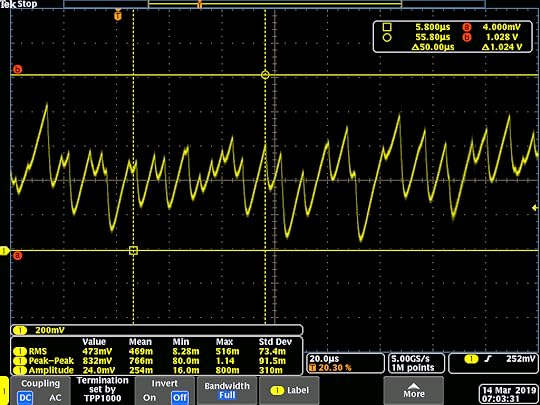Avalanche Noise Generator Notes
Good sources of entropy (noise) are an essential part of modern cryptographic systems. I designed a mobile-friendly avalanche noise generator as part of the background work I’ve been doing for the betrusted project (more on that project later). I had to do a new design because the existing open-source ones I could find were too large and power hungry to integrate into a mobile device. I also found it hard to find solid theory pieces on avalanche noise generators, so in the process of researching this I wrote up all my notes in case someone needs to do a ground-up redesign of the system again in the future.
Here’s an excerpt from the notes:
Avalanche breakdown is essentially a miniature particle accelerator, where electrons that enter a PN junction’s depletion region (through mechanisms that include thermal noise) are accelerated across an electrical field, to the point where new electron-hole pairs are generated when these high-energy electrons collide with atoms in the depletion region, creating an amplification cascade with low reproducibility.
An approximate analogy is an inflatable pool filled with water. The height of the pool is the potential barrier of the reverse-biased PN junction. A hose feeding water into the pool represents a constant current of electrons. The volume of the pool can be thought of as the depletion capacitance, that is, the capacitor created by the region of the junction that is void of carriers due to natural drift and diffusion effects. As water trickles into the pool, the water level rises and eventually forms a meniscus. Random disturbances, such as ripples on the surface due to wind, eventually cause the meniscus to crest over the edge of the pool. The water flowing over the edge pushes down on the inflatable pool’s side, causing more water to flow, until the level has reduced to a point where the inflatable pool’s side can snap back into its original shape, thus restarting the cycle of filling, cresting, and breakdown. The unpredictability of when and where the breakdown might happen, and how much water flows out during the event, is analogous to the entropy generated by the avalanche effect in a PN junction.
The electrical characteristic of avalanche noise biased by a constant current source is a “sawtooth” waveform: a linear ramp up in voltage as the capacitance of the depletion region charges to the point where the electric field becomes large enough to initiate the cascade, and then a sharp drop off in voltage as the cascade rapidly discharges the junction capacitance. The cascade then abruptly halts once the field is no longer strong enough to sustain the cascade effect, leading to a subsequent cycle of charging and breakdown.
The site also includes detailed schematics and measurement results, such as this one.

The final optimized design takes this one).
Andrew Huang's Blog
- Andrew Huang's profile
- 32 followers



